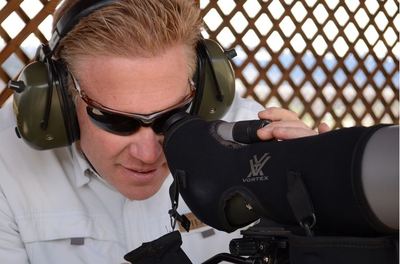The science behind a smart rifle and how it exactly works

Firearms keep evolving. We’ve come a long way from using flintlock rifles that couldn’t hit the broadside of a barn if it was more than 100 feet away. Today, we’re consistently putting rounds on targets that are over a mile away. One of the latest inventions was the Smart Rifle.
This concept came out several years ago and took the industry by surprise. Join us as we discuss the science behind a smart rifle, its influence on the industry, and why it ultimately failed as a product.
External Ballistics
External ballistics is the study of projectiles in flight. The goal of external ballistics is to calculate how a projectile will behave as it is fired from a firearm, artillery gun, or something else. Small arms external ballistics is something every shooter needs to understand to a varying degree.
If you’ll never shoot targets farther than 100 yards, then you don’t have to worry much about external ballistics. But, if you’re trying to hit a steel plate at a mile, you better know your stuff. The farther you shoot, the harder it gets.
People have always looked for ways to make shooting easier. We buy muzzle brakes for AR-15s to kill the recoil. We mount bipods bolt guns to stabilize the platform for long-range shooting. Most importantly, we do what we can to anticipate the impact of wind, humidity, barometric pressure, ballistic coefficient, and even the Coriolis effect on a bullet as it flies towards its target.
But what if a computer could do all that for us?
The Smart Rifle
Ballistic computers are nothing new. You can get an app for your phone that will calculate a firing solution for just about anything. All you need is a Kestrel or similar device to measure the environmental factors and input them into the app. In fact, this is how most of us still come up with firing solutions.
The problem with this method is that it doesn’t account for the most unpredictable variable of them all — the shooter.
A smart rifle is a firearm concept developed by a brand called TrackingPoint back in the early 2010s. Engineers from this applied technologies company have developed a rifle mounted scope system called BRS, or Barrel Reference System. It essentially combined a ballistics computer, a range finder, and a ballistics weather meter into a single device.
The way this system works is ingenious:
- First, you find your target using the scope
- The system then ranges the target, reading all environmental data except for the wind
- You make the wind call manually
- Next, you designate the target by pressing the trigger button on the rifle.
- At this point, you’re getting a visual point of aim reference inside the digital scope
- The moment you align your point of aim with the optimal point of aim, the rifle breaks the shot automatically
Letting the computer take over the trigger is probably the main reason why this system delivered consistent first shot hits at all kinds of ranges. By eliminating that trigger finger, you’re making the entire process much less susceptible to human error. So if all of this was true, why was BRS ultimately a commercial failure?
Behind the Curtains

All of this looked great on paper. Even the most hard-core traditionalists couldn’t deny the results. Yet, TrackingPoint had ultimately failed. Why they failed is the same reason why most similar technologies never left the development stage — reliability issues.
Different sources offer different takes on how unreliable the BRS was. Some say it barely worked while claim it was working 60% of the time. Either way, it was nowhere near ready for a commercial launch.
With advanced systems like these, any performance issues are enough to bury the entire project. Despite technical issues, the company grew in the period from 2011 to 2015. They even scored a contract with Remington, which was supposed to give this brand some street cred within the firearms world. However, when 40% of the BRS devices were flagged by Remington as faulty, TrackingPoint was more or less done.
Not long after, the official word from the company was that it no longer accepted orders for BRS systems.
The Future of Smart Rifles
The failure of TrackingPoint has made it clear that the industry still wasn’t ready for ‘perfect rifles’. That being said, they made leaps and bounds in what will one day become the new standard.
If it wasn’t rushed, the BRS could have been successful, which would probably lead to at least a few defense contracts. If their products passed the initial trials, TrackingPoint would have realized the dream of a Smart Rifle. Alas, it wasn’t meant to be.
This is the current state of rifles in our world today. In the coming decades, technology will certainly vastly improve its function. It’s best to keep an eye on the latest developments to see whether these changes are beneficial and advantageous to all.


